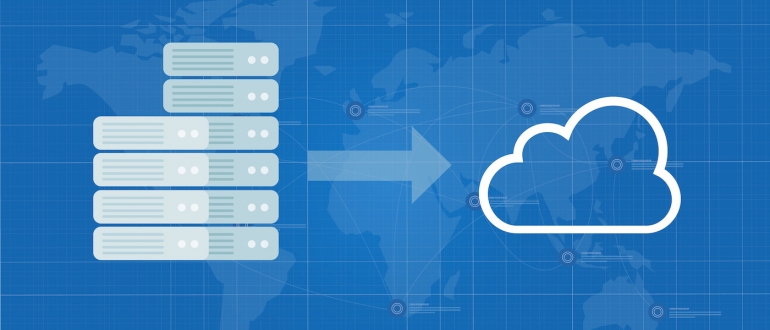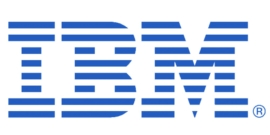IBM Cloud Mass Data Migration simplifies the movement and transformation of data. Read our review of the tool to learn about functionality, competitors and pricing.

By 2025, it is expected that 463 exabytes of data will be generated worldwide every day, and 85% of organizations will have adopted a cloud-first strategy for their IT. This massive data growth and shift toward the cloud will have widespread implications for cloud providers and other businesses alike.
SEE: Data migration testing checklist: Through pre- and post-migration (TechRepublic Premium)
Minimally, this evolution means commercial cloud providers will need to develop and adopt better ways to rapidly transfer terabytes and petabytes of data securely and affordably to the cloud. One platform that is active in this space is IBM Cloud Mass Data Migration.
In this review, we’ll discuss IBM Cloud Mass Data Migration’s key features as well as some alternatives in the cloud data migration space.
Jump to:
What is IBM Cloud Mass Data Migration?

Formerly known as IBM Mass Data Migration, IBM Cloud Mass Data Migration is designed to transfer massive data payloads by using storage devices with up to 120TB of carrying capacity in the transfer process.
Using these devices accelerates data movement to the IBM cloud and eliminates some of the major data transfer obstacles organizations have contended with in cloud data transfers over the years. Among these obstacles are the high cost of transferring data to the cloud, constraints on bandwidth that result in long data transfer times and even data transfer delays and concerns about data security during transfers.
SEE: Data governance checklist for your organization (TechRepublic Premium)
IBM Cloud Mass Data Migration is actually a physical data transfer method. Organizations that subscribe to the service received preconfigured 120TB storage devices from IBM. The user selects the data they want to transfer to the device, and both data encryption and data transfer are performed automatically. The user then affixes a pre-furnished shipping label to the device that already contains the name of the IBM cloud service center that will upload the data to the cloud and then wipe the device clean.
Physical shipments can be completed on a schedule that IT sets and controls. There is no need to be held back by bandwidth constraints that can happen over the internet or other wireless transfer methods.
Features and benefits of IBM Cloud Mass Data Migration
Faster, planned data migrations
At RAID-6, IBM Cloud Mass Data Migration makes it possible for customers to migrate up to 120TB of data to the cloud in just a few days. In contrast, a typical data transfer to the cloud over the internet might proceed as slowly as 1TB of data in 34 hours.
Customizable and scalable data transfer
There’s no longer any question of when or if the internet and other forms of online data transfer will provide the bandwidth needed to complete data transfers. With IBM Cloud Mass Data Migration, you can plan your workloads and data transfers and procure the number of IBM physical devices needed to accomplish them.
No learning curve
You can start your data transfers immediately upon receiving your device because the physical devices IBM furnishes are already preconfigured and ready to go. All you need to do is identify the data you want to transfer. The IBM Cloud Mass Data Migration device and the processes embedded in it do the rest.
Strong security standards
Before any data is stored on the physical devices IBM provides, the data is encrypted. The devices themselves are sealed and tamper-proof. When the devices arrive at the IBM Cloud Center, data from the devices is uploaded to the cloud and devices are then wiped clean. With these security protocols in place, customers don’t need to worry about data being intercepted while it is in transit over the internet or other communication lines.
IBM Cloud Mass Data Migration pricing
IBM Cloud Mass Data Migration is priced at $50 USD per day, with device, optics and shipping included in that cost. Daily charges begin the day you receive your device from IBM and stop the day the device is returned to IBM for offloading.
IBM Cloud Mass Data Migration competitors and alternatives
AWS Migration Services

AWS Migration Services include options like database and server migration support. The suite of services provides offline data storage appliances that customers can ship to an Amazon data center, where data is then uploaded to the cloud.
For Amazon AWS users, all data migration services are free. The downside is that AWS cloud data migration services only support data transfers to the AWS cloud.
Microsoft Azure Migration Tools

Azure Migration Service and Database Migration Service are online data transfer services offered by Microsoft. Microsoft also offers offline Data Box hardware that uses AES encryption to protect data; this hardware can be shipped to a Microsoft Azure data center.
All of these data migration services are offered free of charge. However, data transfers are only supported for Microsoft’s Azure Cloud.
Carbonite Migrate

Carbonite Migrate is targeted at companies that want to focus their cloud data transfer activities on data recovery rather than everyday data transfer operations. Because Carbonite Migrate focuses on disaster recovery, its technical and customer support team is excellent.
Carbonite Migrate is also cloud vendor agnostic. It supports data transfers to AWS, Microsoft Azure, Google and VMWare. All data transfers are performed online; Carbonite does not offer a physical hardware data transfer option.
Read our review of Carbonite Migrate.
Micro Focus PlateSpin Migrate

Micro Focus PlateSpin Migrate supports multiple cloud environments, including AWS, Microsoft Azure and VMware. It is a well-positioned product for companies that are working in a multicloud environment.
PlateSpin Migrate has security that is granularized down to the permission levels of individual users. Data transfers are performed online, as PlateSpin Migrate doesn’t use physical hardware devices.
Read next: Top cloud and application migration tools (TechRepublic)
